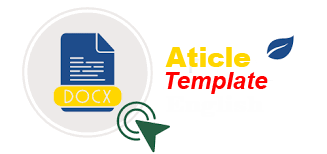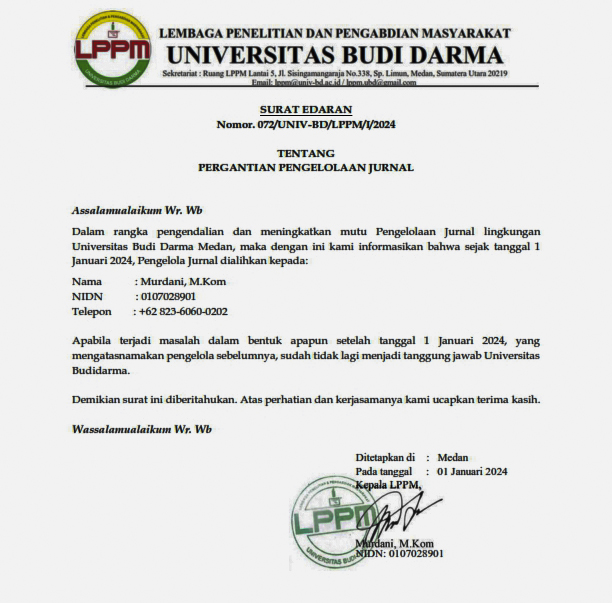Penerapan Metode Linear Regression dalam Mengestimasi Jumlah Penduduk
DOI:
https://doi.org/10.30865/jurikom.v9i4.4676Keywords:
Population, North Sumatra, Datamining, Linear Regression, RapidminerAbstract
A population is a group of people who live in an area to settle with existing needs. Population growth is growing rapidly to date, so action is needed to anticipate the rate of population growth. This study aims to estimate the population of the province of North Sumatra by using computer science techniques. The source of research data comes from the Central Statistics Agency (abbreviated BPS) Indonesia. The data used is the 2010-2020 dataset which consists of the total population consisting of men and women in Indonesia. The data is processed using Rapidminer software. This algorithm was chosen linear regression because it is able to make an estimate by utilizing old data. So that it can produce a pattern of relationships between the attributes that affect the rate of population growth. The research results obtained can be used as recommendations or input to the subsection of population data collection at the BPS North Sumatra in making it easier to predict or estimate data so as to minimize the rate of population, especially in Indonesia.References
R. Pancasasti and E. Khaerunisa, “Analisis Dampak Laju Pertumbuhan Penduduk Terhadap Aspek Kependudukan Berwawasan Gender Pada Urban Area Di Kota Serang,†Tirtayasa Ekonomika, vol. 13, no. 1, pp. 130–145, 2018, doi: 10.35448/jte.v13i1.4231.
P. S. Ramadhan and N. Safitri, “Penerapan Data Mining Untuk Mengestimasi Laju Pertumbuhan Penduduk Menggunakan Metode Regresi Linier Berganda Pada BPS Deli Serdang,†Sains dan Komputer (SAINTIKOM), vol. 18, no. 1, pp. 55–61, 2019.
A. P. Windarto, U. Indriani, M. R. Raharjo, and L. S. Dewi, “Bagian 1: Kombinasi Metode Klastering dan Klasifikasi (Kasus Pandemi Covid-19 di Indonesia),†Jurnal Media Informatika Budidarma, vol. 4, no. 3, p. 855, 2020, doi: 10.30865/mib.v4i3.2312.
B. Supriyadi, A. P. Windarto, T. Soemartono, and Mungad, “Classification of natural disaster prone areas in Indonesia using K-means,†International Journal of Grid and Distributed Computing, vol. 11, no. 8, pp. 87–98, 2018, doi: 10.14257/ijgdc.2018.11.8.08.
Z. R. S. Elsi et al., “Utilization of Data Mining Techniques in National Food Security during the Covid-19 Pandemic in Indonesia,†Journal of Physics: Conference Series, vol. 1594, no. 1, 2020, doi: 10.1088/1742-6596/1594/1/012007.
D. Hartama, A. Perdana Windarto, and A. Wanto, “The Application of Data Mining in Determining Patterns of Interest of High School Graduates,†Journal of Physics: Conference Series, vol. 1339, no. 1, 2019, doi: 10.1088/1742-6596/1339/1/012042.
A. Wati, I. Indriani, T. S. S. Manihuruk, Sintya, I. Y. Manurung, and A. P. Windarto, “Implementasi Datamining Pada Kasus Tenaga Listrik Yang Dibangkitkan Berdasarkan Provinsi,†KOMIK (Konferensi Nasional Teknologi Informasi dan Komputer), vol. 3, no. 1, pp. 719–727, 2019, doi: 10.30865/komik.v3i1.1683.
C. S. Sasikumar and A. Kumaravel, “Linear regression and support vector machine for classification of e-learning students’ engagement and performance,†International Journal of Engineering and Advanced Technology, vol. 8, no. 6, pp. 2696–2700, 2019, doi: 10.35940/ijeat.F8760.088619.
I. Sharma and S. Kakchapati, “Linear Regression Model to Identify the Factors Associated with Carbon Stock in Chure Forest of Nepal,†Scientifica, vol. 2018, 2018, doi: 10.1155/2018/1383482.
G. K. Uyanık and N. Güler, “A Study on Multiple Linear Regression Analysis,†Procedia - Social and Behavioral Sciences, vol. 106, pp. 234–240, 2013, doi: 10.1016/j.sbspro.2013.12.027.
M. K. Warsino, S.Kom., M.M., “Metode Peramalan Permintaan Jasa Penerjemahan Bahasa Asing Dengan Algorithma Linear Regression, Menggunakan Rapidminer. Studi Kasus: Azzam Translator Bekasi,†Santika: Jurnal Ilmiah Sains dan Teknologi, vol. 7, no. 2, pp. 621–628, 2017.
H. Di Kesuma and R. Yanto, “Data mining prediction production of water needs using simple linear regression algorithms,†International Journal of Engineering and Advanced Technology, vol. 9, no. 1, pp. 3575–3578, 2019, doi: 10.35940/ijeat.A2690.109119.
G. N. Ayuni and D. Fitrianah, “Penerapan Metode Regresi Linear Untuk Prediksi Penjualan Properti pada PT XYZ,†Jurnal Telematika, vol. 14, no. 2, pp. 79–86, 2019, [Online]. Available: https://journal.ithb.ac.id/telematika/article/view/321.
I. L. L. Gaol, S. Sinurat, and E. R. Siagian, “Implementasi Data Mining Dengan Metode Regresi Linear Berganda Untuk Memprediksi Data Persediaan Buku Pada Pt. Yudhistira Ghalia Indonesia Area Sumatera Utara,†KOMIK (Konferensi Nasional Teknologi Informasi dan Komputer), vol. 3, no. 1, pp. 130–133, 2019, doi: 10.30865/komik.v3i1.1579.
B. D. F. Kurniatullah and Y. T. C. Pramudi, “Estimation of Students’ Graduation Using Multiple Linear Regression Method,†Journal of Applied Intelligent System, vol. 2, no. 1, pp. 29–36, 2017, doi: 10.33633/jais.v2i1.1415.
M. Anjelita, A. P. Windarto, and A. Wanto, “Analisis Metode K-Means Pada Kasus Ekspor Barang Perhiasan Dan Barang Berharga Berdasarkan Negara Tujuan Mawaddah,†Seminar Nasional Sains & Teknologi Informasi (SENSASI), vol. ISBN: 978-, pp. 476–482, 2019.
I. Parlina, A. P. Windarto, A. Wanto, and M. R. Lubis, “Memanfaatkan Algoritma K-Means Dalam Menentukan Pegawai Yang Layak Mengikuti Asessment Center,†vol. 3, no. 1, pp. 87–93, 2018.
D. Muriyatmoko, “Analisa Volume Terhadap Sitasi Menggunakan Regresi Linier Pada Jurnal Bereputasi di Indonesia,†Jurnal Ilmiah Simantec, vol. 6, no. 3, pp. 129–134, 2018.
M. Anjelita, A. P. Windarto, and D. Hartama, “Pemanfaatan Datamining Pada Pengelompokan Provinsi Terhadap Pencemaran Lingkungan Hidup,†KOMIK (Konferensi Nasional Teknologi Informasi dan Komputer), vol. 3, no. 1, pp. 659–666, 2019, doi: 10.30865/komik.v3i1.1675.








